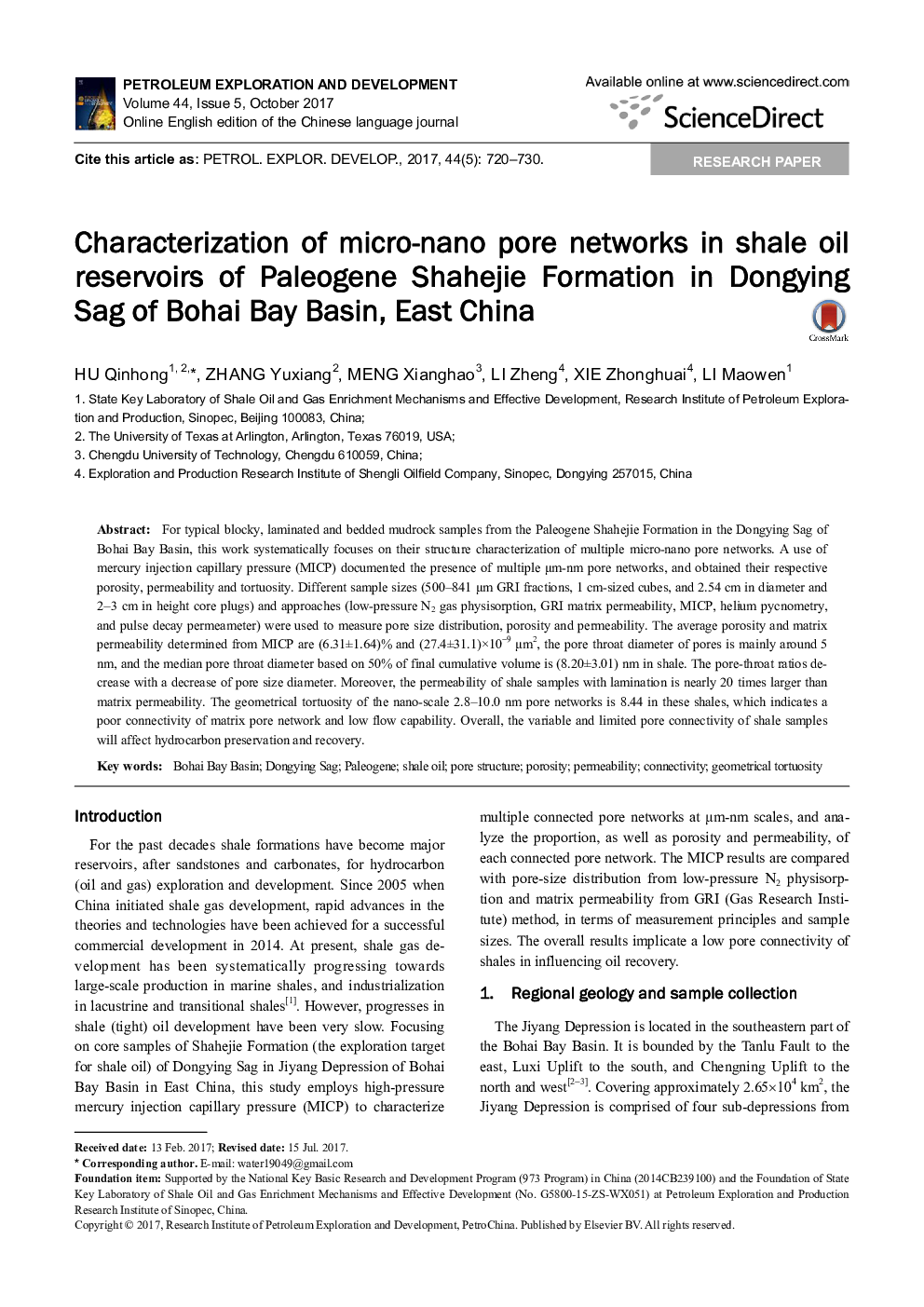| Article ID | Journal | Published Year | Pages | File Type |
|---|---|---|---|---|
| 8912214 | Petroleum Exploration and Development | 2017 | 11 Pages |
Abstract
For typical blocky, laminated and bedded mudrock samples from the Paleogene Shahejie Formation in the Dongying Sag of Bohai Bay Basin, this work systematically focuses on their structure characterization of multiple micro-nano pore networks. A use of mercury injection capillary pressure (MICP) documented the presence of multiple μm-nm pore networks, and obtained their respective porosity, permeability and tortuosity. Different sample sizes (500-841 μm GRI fractions, 1 cm-sized cubes, and 2.54 cm in diameter and 2-3 cm in height core plugs) and approaches (low-pressure N2 gas physisorption, GRI matrix permeability, MICP, helium pycnometry, and pulse decay permeameter) were used to measure pore size distribution, porosity and permeability. The average porosity and matrix permeability determined from MICP are (6.31±1.64)% and (27.4±31.1)Ã10-9 μm2, the pore throat diameter of pores is mainly around 5 nm, and the median pore throat diameter based on 50% of final cumulative volume is (8.20±3.01) nm in shale. The pore-throat ratios decrease with a decrease of pore size diameter. Moreover, the permeability of shale samples with lamination is nearly 20 times larger than matrix permeability. The geometrical tortuosity of the nano-scale 2.8â10.0 nm pore networks is 8.44 in these shales, which indicates a poor connectivity of matrix pore network and low flow capability. Overall, the variable and limited pore connectivity of shale samples will affect hydrocarbon preservation and recovery.
Keywords
Related Topics
Physical Sciences and Engineering
Earth and Planetary Sciences
Geochemistry and Petrology
Authors
Qinhong HU, Yuxiang ZHANG, Xianghao MENG, Zheng LI, Zhonghuai XIE, Maowen LI,
